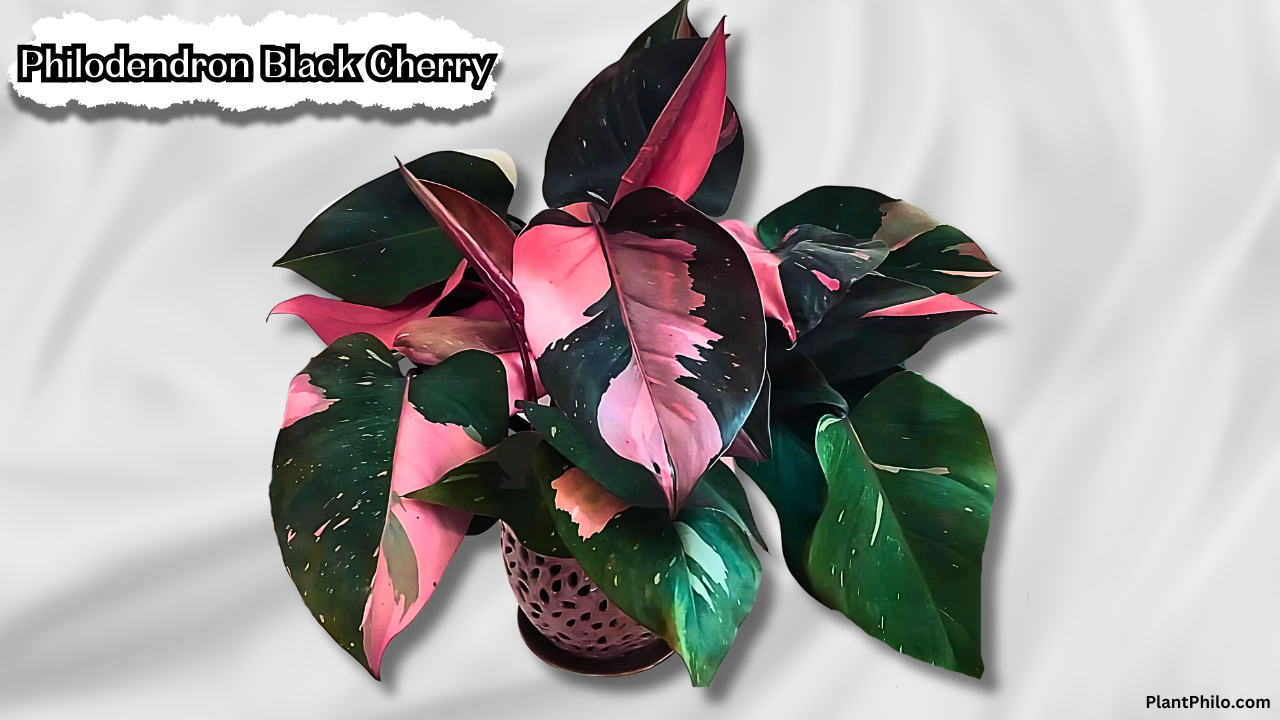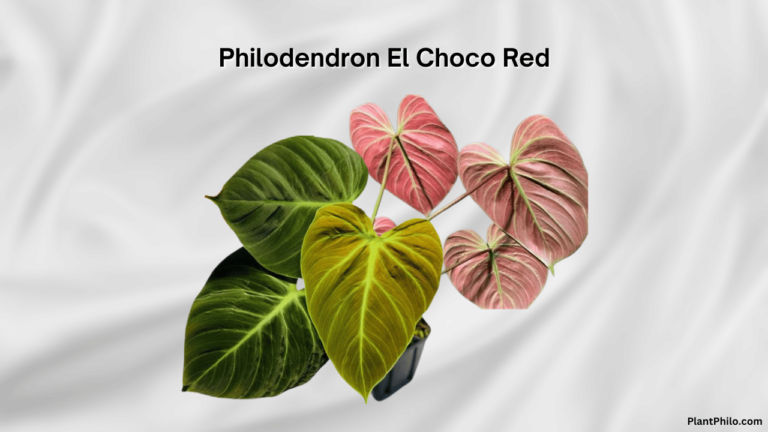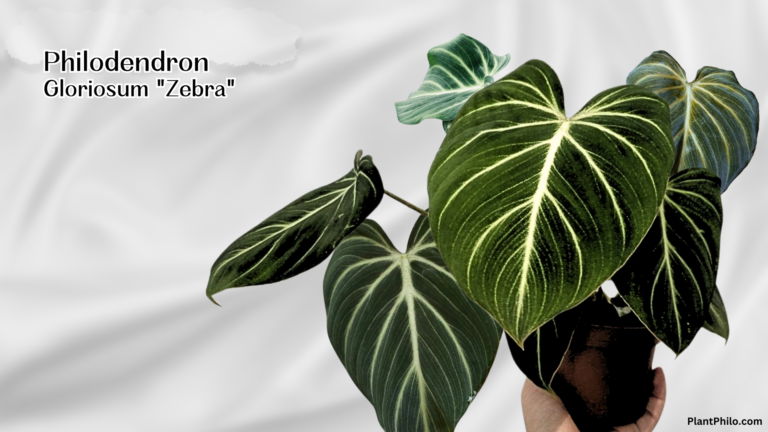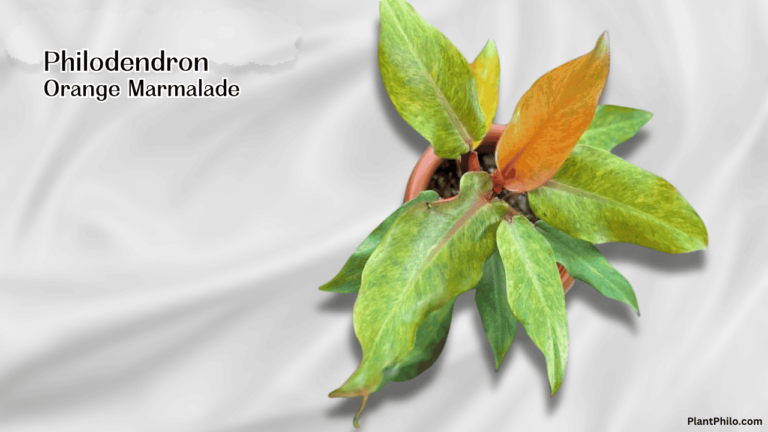The Low-Maintenance, High-Drama Black Cherry Philo: Your New Plant BFF
Philodendron Black Cherry – the name itself conjures images of deep, rich foliage and an air of exotic elegance. If you’re a plant enthusiast, you’ve likely been captivated by its allure, its leaves promising a touch of the dramatic for your indoor jungle.
But like any prized gem, the Black Cherry requires specific care and attention to truly shine. Fear not, fellow plant parent!
We’re here to guide you through the ins and outs of nurturing this beauty, ensuring your Black Cherry flourishes and becomes the envy of all who behold it.
Characteristics of the Philodendron Black Cherry
The Philodendron Black Cherry, a cultivar of the popular Philodendron hederaceum, is a vining plant known for its striking foliage. Let’s delve into its key characteristics:
- Leaf Shape & Color: The heart-shaped leaves are the star of the show, emerging in a vibrant green and gradually deepening into a rich, dark burgundy or almost black hue as they mature. The new leaves often unfurl with a reddish tint, adding another layer of visual interest.
- Growth Habit: As a vining plant, the Black Cherry loves to climb or trail. Provide it with a moss pole or trellis, and watch it create a stunning vertical display. Alternatively, let it cascade gracefully from a hanging basket.
- Size: The Black Cherry can grow several feet long, making it a versatile choice for various spaces. With proper pruning and training, you can control its size and shape to fit your aesthetic preferences.
Care Tips: Nurturing Your Philodendron Black Cherry
Like any Philodendron, the Black Cherry thrives in warm, humid conditions that mimic its tropical origins. Let’s explore its care requirements in detail:
- Light: Bright, indirect light is ideal. Avoid direct sunlight, which can scorch the leaves and cause the dark coloration to fade. An east- or west-facing window is a good spot.
- Water: Water when the top inch of soil is dry. Allow excess water to drain to prevent root rot. These plants enjoy consistently moist but not soggy soil.
- Soil: A well-draining potting mix is essential. Look for a mix that contains perlite, coco coir, or orchid bark to ensure proper drainage and aeration.
- Humidity: The Black Cherry prefers high humidity (60-80%). You can increase humidity by misting regularly, using a pebble tray, or running a humidifier.
- Temperature: Keep temperatures between 65-80°F (18-27°C). Avoid cold drafts and sudden temperature changes.
- Fertilizer: Fertilize monthly during the growing season (spring and summer) with a balanced liquid fertilizer diluted to half strength.
- Pruning: Prune regularly to maintain shape and encourage new growth. You can also propagate your plant from stem cuttings.
- Pests & Diseases: Keep an eye out for common pests like spider mites, mealybugs, and scale. Treat infestations promptly with insecticidal soap or neem oil. Root rot can be a problem if the soil is kept too wet. Ensure proper drainage and avoid overwatering.
Propagation
Propagating your Philodendron Black Cherry is a rewarding way to expand your collection or share the love with fellow plant enthusiasts. The most common method is through stem cuttings.
- Select a healthy stem: Choose a stem with at least one node (the bump where leaves emerge).
- Make the cut: Use a clean, sharp pair of scissors or pruning shears to cut the stem just below a node.
- Place in water or soil: You can either place the cutting in a jar of water or directly into a pot filled with a well-draining potting mix.
- Provide warmth and humidity: Place the cutting in a warm, humid location with bright, indirect light.
- Wait for roots to develop: Roots should start to develop within a few weeks. Once the roots are a few inches long, you can put the cutting into its own container.
Common Problems and Solutions
Even with the best care, your Philodendron Black Cherry might encounter some bumps in the road. Here are some common problems and their solutions:
- Yellowing leaves: This could be a sign of overwatering, underwatering, or nutrient deficiencies. Check the soil moisture and adjust your watering accordingly. You may also need to fertilize your plant.
- Brown leaf tips or edges: This is often caused by low humidity or inconsistent watering. Increase humidity levels and ensure the soil remains evenly moist.
- Pests: Spider mites, mealybugs, and scale can infest your plant. Treat infestations promptly with insecticidal soap or neem oil.
- Leggy growth: This is usually a sign of insufficient light. Move your plant to a brighter location or provide supplemental artificial light.
- Loss of dark coloration: If the leaves start to lose their deep burgundy hue, it could be due to insufficient light. Increase light exposure, but avoid direct sunlight.
FAQs
Is the Philodendron Black Cherry rare?
While not as common as some other Philodendron varieties, it’s becoming increasingly available at garden centers and online retailers.
How fast does the Black Cherry grow?
It’s a moderately fast grower, especially during the growing season (spring and summer).
Can I grow my Black Cherry in a terrarium?
Yes, but ensure adequate ventilation to prevent fungal issues.
What’s the best way to encourage my Black Cherry to climb?
Provide a moss pole or trellis for support and gently tie the stems to it as they grow.
Can I propagate my Black Cherry in water?
Yes, stem cuttings can be easily rooted in water.
Why are the new leaves on my Black Cherry green instead of burgundy?
New leaves often emerge green and gradually darken as they mature.
Should I mist my Black Cherry?
Yes, regularly misting your plants can help increase humidity levels, which this plant loves.
Can I fertilize my Black Cherry with coffee grounds?
While coffee grounds can provide some nutrients, it’s best to use a balanced liquid fertilizer formulated for houseplants.
Is the Black Cherry toxic to pets?
Yes, it’s toxic to cats and dogs if ingested. Keep it out of reach of your furry friends.
What other Philodendrons have dark leaves?
Some other popular Philodendrons with dark leaves include ‘Micans,’ ‘Black Cardinal,’ and ‘Majesty.’
Embrace the Dark Side of Beauty
The Philodendron Black Cherry, with its velvety, deep burgundy leaves, is a captivating addition to any plant collection. By understanding its care needs and addressing common problems, you can ensure your plant thrives and becomes a stunning focal point in your home. So go ahead, embrace the dark side of beauty and let the Philodendron Black Cherry cast its spell on you!





